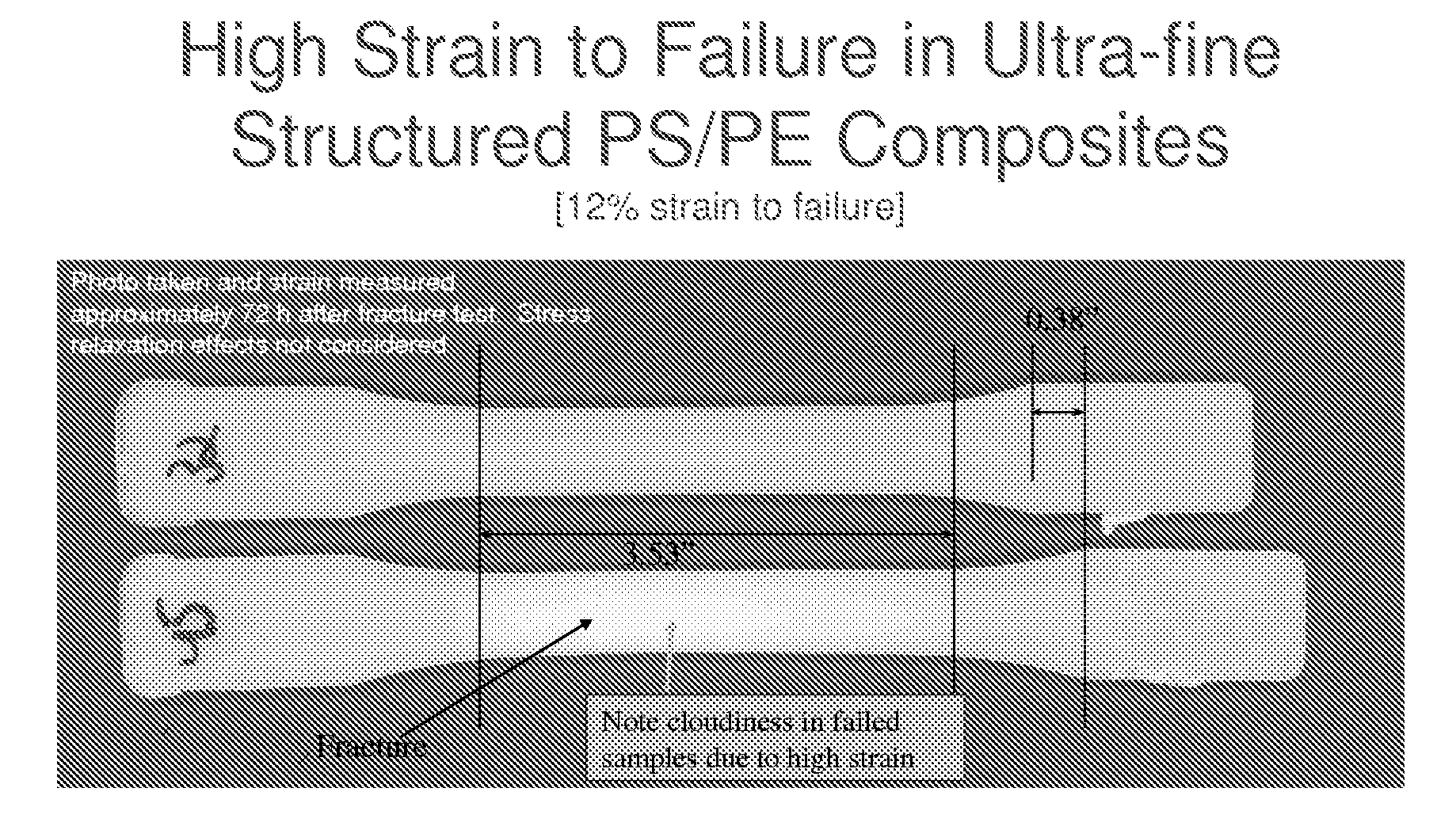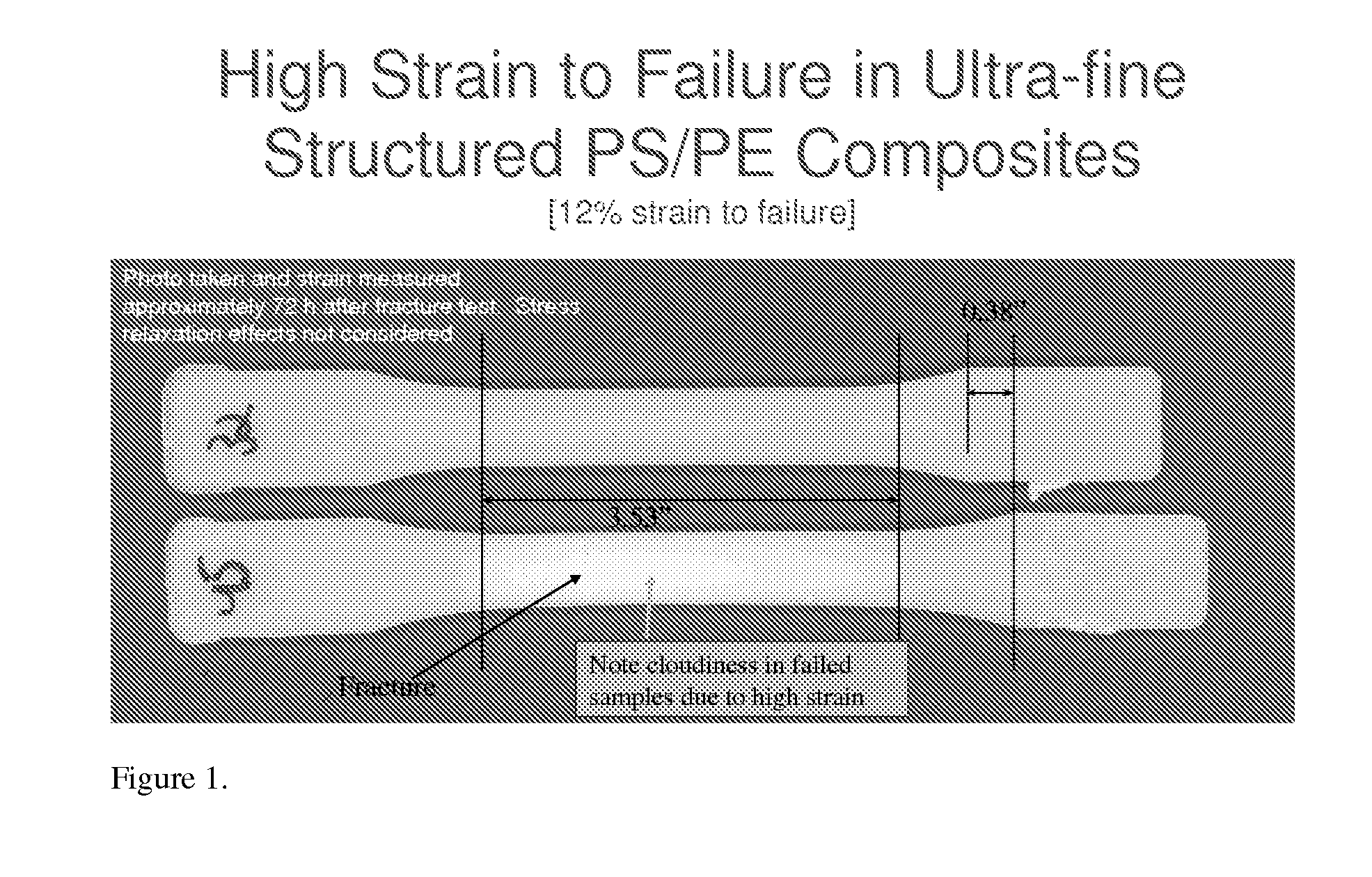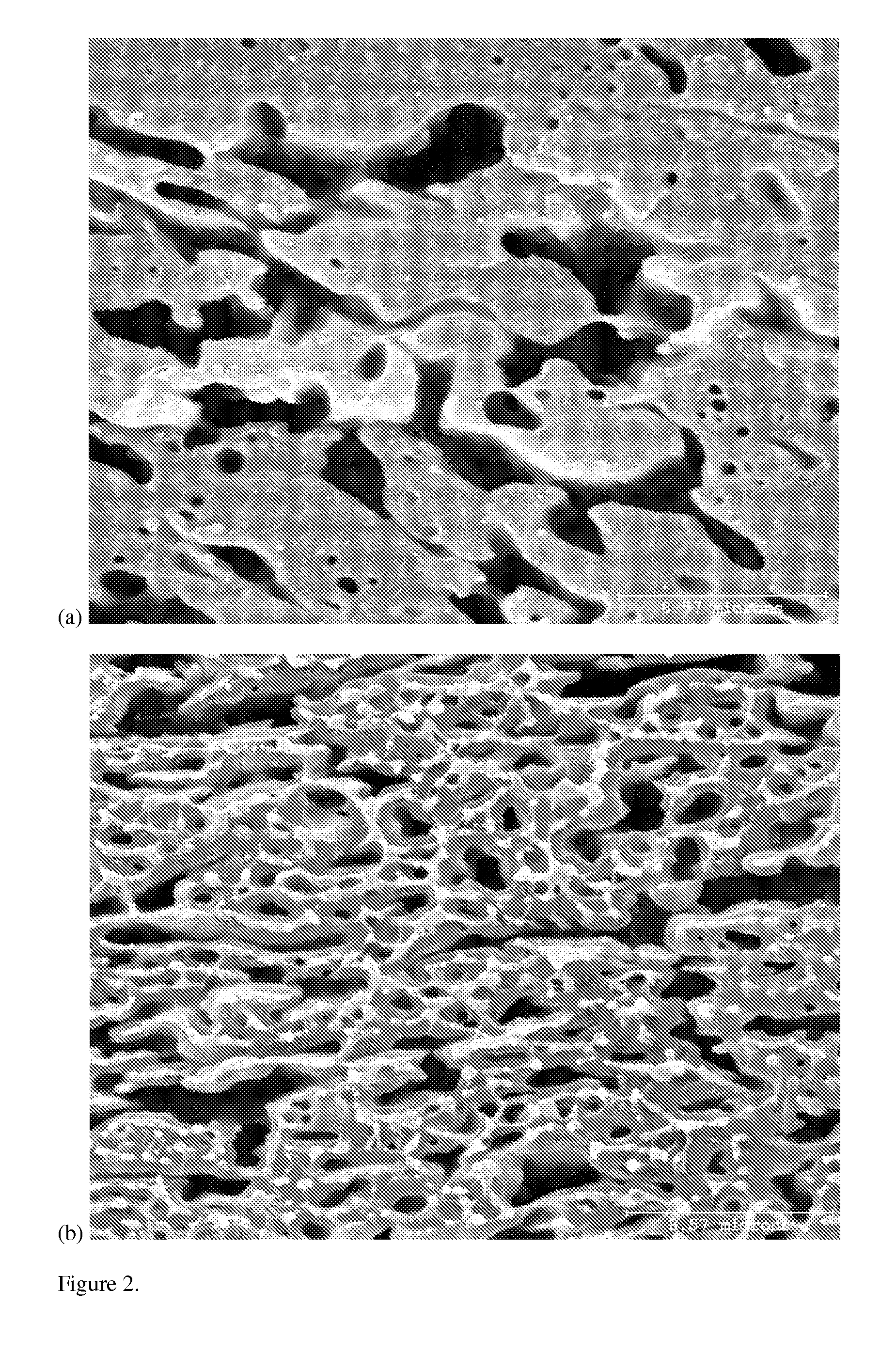Methods of increasing toughness of immiscible polymer blends
a technology of immiscible polymer and blend, which is applied in the direction of transportation and packaging, rigid containers, other domestic articles, etc., can solve the problems of toughness and stiffness of most immiscible blends of tough [e.g. hdpe] polymers, and achieve the effect of improving the toughness and toughness of immiscible polymers
- Summary
- Abstract
- Description
- Claims
- Application Information
AI Technical Summary
Benefits of technology
Problems solved by technology
Method used
Image
Examples
example 1
PS / HDPE Blends
[0024]Shown below are samples of 35 wt % PS and 65 wt % HDPE processed the typical way with a standard single screw extruder and with the compounding single screw of U.S. Pat. No. 6,962,431 for comparison. (FIG. 1). The morphology of each sample is shown in FIG. 2, as determined using a scanning electron microscope. The PS phase was leached using toluene in order to better show the morphology. For comparison, the micrograph in FIG. 2(a) is that of the sample produced using a standard single screw extruder. FIG. 2(b) is that of the sample produced using the compounding single screw of the '431 patent. At the same scale of 8.57 μm, the standard single screw extruder produced a much more coarse structure than the compounding single screw of the '431 patent, which in turn affects the mechanical properties. The immiscible polymer blend compounded using the '431 extruder possesses about the same stiffness and strength as the sample prepared with the standard extruder, but wi...
example 2
PTT / PMMA Blends
[0025]Blends of poly(trimethylene terephthalate) (PTT) and poly(methylmethacrylate) (PMMA) prepared using typical injection molding (IM) methods were compared with blends prepared with the compounding single screw of U.S. Pat. No. 6,962,431. SEM micrographs of 95 / 5 wt % PTT / PMMA indicate that the compounding single screw of the '431 patent produces a much better level of mixedness of PMMA particles in the PTT matrix (FIGS. 4a and b). FIG. 5 presents tensile mechanical property stress versus strain data. Each curve is the average of 5 specimens tested. The injection molded blend fractured at about 2.5% strain while the blend that was processed with the compounding single screw of the '431 patent did not fracture prior to termination of the tests at 30% strain.
PUM
| Property | Measurement | Unit |
|---|---|---|
| Size | aaaaa | aaaaa |
| Flow rate | aaaaa | aaaaa |
| Density | aaaaa | aaaaa |
Abstract
Description
Claims
Application Information
 Login to View More
Login to View More - R&D
- Intellectual Property
- Life Sciences
- Materials
- Tech Scout
- Unparalleled Data Quality
- Higher Quality Content
- 60% Fewer Hallucinations
Browse by: Latest US Patents, China's latest patents, Technical Efficacy Thesaurus, Application Domain, Technology Topic, Popular Technical Reports.
© 2025 PatSnap. All rights reserved.Legal|Privacy policy|Modern Slavery Act Transparency Statement|Sitemap|About US| Contact US: help@patsnap.com



